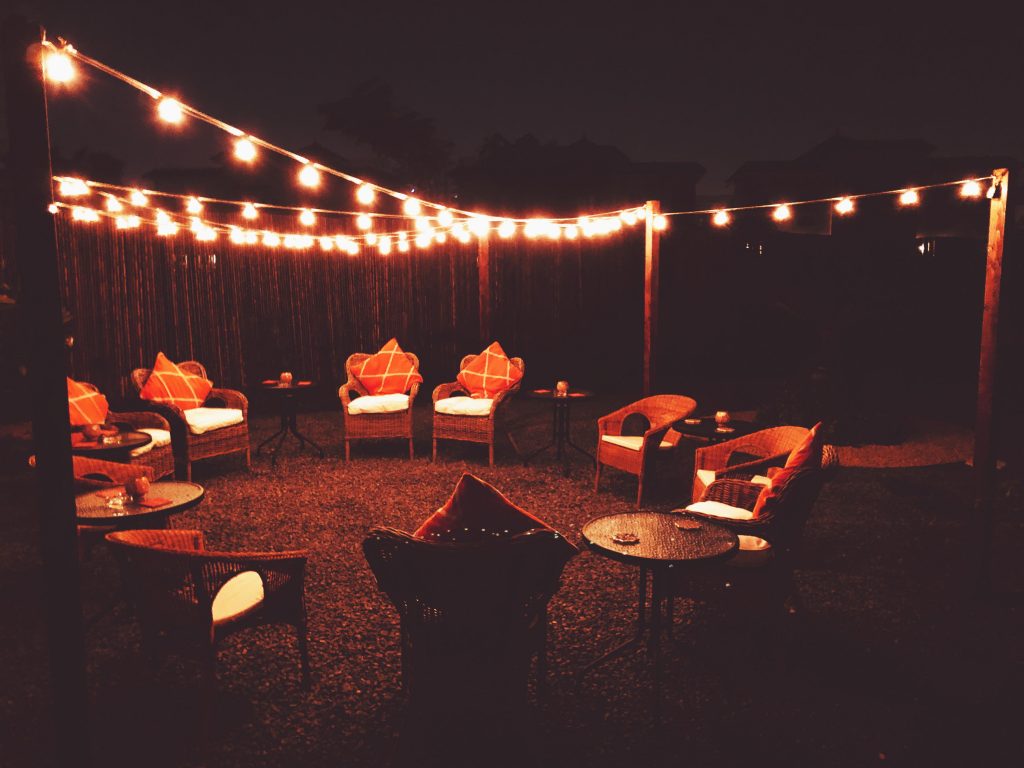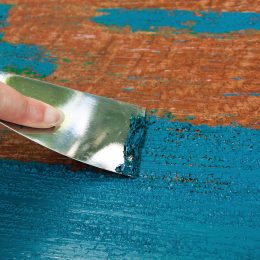
(This article is for informational purposes only. Indiana Connection and Do it Best Corp. assume no liability for the accuracy or completeness of the information contained herein, or for injuries, property damage, or the outcome of any project.)
BY BRIAN HOWENSTINE
Adding strings of decorative lighting outdoors can add ambiance for dining and entertaining, as well as a degree of safety and security to darkened pathways. It’s become quite a popular and fashionable way to enhance a space, and your lighting choices are many. What’s old is new again, as one type of lighting gaining popularity are old-style Edison bulbs — with a twist. Their visible filaments add a vintage, yet modern flair to your backyard spaces thanks to LED technology.
Step 1 – Plan it out
Sketch out your desired overall lighting design. This will help determine how many strings and fasteners you’ll need to achieve your look and make sure your setup is safe. Measure the precise lengths of stringed lights and supportive cable guide wires (recommended) you’ll need to span your patio or yard. Allow enough extra length for slacked lines, access to an electrical source, and to double up the cable guide wire for extra stability at mounting points. Using twine as a stand-in will help you visualize how it will look and give you more accurate measurements.
Step 2 – Go shopping
Invest in commercial grade lights rated for outdoor use, which are more durable and waterproof. If you’re using several strings or criss-crossing Edison-style bulbs, remove the bulbs first so they’re easier to connect and drape, and they won’t get tangled. One advantage of LED lights is their energy efficiency. The manufacturer’s recommendations on how many strings you can connect together may be given in total wattage, not footage, so more strings and lights are OK with LED bulbs. But it’s still a good idea to check their recommendations on the number of strands you can safely connect end to end. If the strings you choose don’t already come with bulbs, be sure to choose bulbs with bases that are compatible with the sockets. If you don’t have an outlet nearby, get a heavy-duty outdoor extension cord long enough to reach one. You may need more than one to handle multiple groupings of strands.
Step 3 – Gather fasteners and tools
If you’re stringing your lights over a large expanse, you’ll need to pick up some hardware to securely fasten your strings to the cable guide wires and also the guide wires to the mounting points. Turnbuckles, snap hooks, lock clamps, and pad eyes with screws are a good start. Cable clips and zip ties are a must when using a cable wire suspension kit, preferably in a color that matches the light string. Lastly, have wire cutters and a drill on standby, along with a sturdy ladder.
Step 4 – Install the hardware
Screw hooks work well in trees, fences, porches, pergola roofs, or the eaves of your house. The more hooks you install, the less burden you’ll put on your cable wires and strings. If you don’t have existing natural supports, a common solution is to install posts with hooks on top into sturdy planters filled with gravel or buckets filled with concrete.
Step 5 – Start hanging
The way you string your lights comes down to personal preference. Sometimes straight rows look best, while a zigzag pattern can put a little more pizzazz into your patio. Have someone help eyeball the strings while you’re hanging them, making sure they’re well-spaced and have the right amount of slack. Plus, it’s always smart to have a spotter while you’re using a ladder. Plug in your extension cords then sit back and enjoy the magical glow of your handiwork.
Visit your local Do it Best store or doitbest.com for thousands of the best home improvement products, including varieties of stringed lights and fastening essentials to create a beautifully lit space, indoors or out.
BRIAN HOWENSTINE is the owner of Decatur Do it Best Hardware and Wabash Do it Best Hardware and is a member-owner of Do it Best Corp., a Fort Wayne-based cooperative of thousands of hardware stores, home centers and lumberyards throughout the US and around the world.



